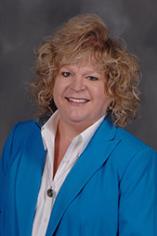One of the leaders of Â鶹´«Ă˝â€™s Anti-Racism Task Force is reflecting on the group’s success with an eye to the past.
“The accomplishments of the task force are really grounded in the historic work of the Department of Africana Studies, Black United Students and many others,” said Amoaba Gooden, Ph.D., vice president for Diversity, Equity and Inclusion, who heads the task force.

President Todd Diacon announced the formation of the task force in fall 2020, challenging the university community to do better when addressing “racism and violence against Black Americans, other people of color, and religious and ethnic groups.”
The task force formed in the aftermath of contemporary events, including the police killings of Black Americans George Floyd and Breonna Taylor, and incidents on the Kent Campus when racially offensive language was painted on the Rock.
As Black History Month ends, Gooden noted how the task force’s work is ever ongoing, just as work for racial equality has been ongoing at Kent State for decades through the efforts of leaders such as Milton E. Wilson Jr., Ph.D., who was the first dean of human relations at Kent State in 1969 and was named dean of student affairs in 1978.
Throughout his career, Wilson strove to improve the conditions for disabled and minority students. In 1967, he established Kent State’s Office of Handicapped Services. Wilson, who died in 1989, served on the faculty at Kent State from 1964 to 1985.
“Milton Wilson really worked to advance the issues of equity and racial equity,” Gooden said.
After more than a year of meeting virtually during the pandemic, the Anti-Racism Task Force completed a 40-page final report in spring 2021. It includes more than 100 recommendations for ways the university can address systemic racism and become more equitable and diverse.
More than 20% of those recommendations have been completed, and another 25% are in the process of being completed, Gooden said.

Melody Tankersley, Ph.D., senior vice president and provost and a member of the Anti-Racism Task Force Steering Committee, said the call for participation in the task force met with overwhelming support by students, faculty and staff, “who were ready and eager to join in the work of racial equity.
“Because of their focus and energy, they quickly turned issues into action points. We have made a lot of initial progress and we continue the critical work together,” she said.
One recent notable success was the group’s Anti-Racism Conference held in October 2022, which is expected to become an annual event. For the 2023 Fall Semester, the conference will be held in Kent but will be a joint event with Ohio University and Miami University.
Gooden said the conference was an immense success and the feedback was positive.
“People just felt supported and welcomed the opportunity to come together in a necessary and meaningful way,” she said.
Efforts are collaborative and include the development of a mentorship program for all faculty, increased mental health awareness for Black faculty and students, review of hiring practices, and the development of a recruitment and hiring tool kit.
The improvements should benefit everyone on campus, Gooden noted.
Gooden is particularly proud of two accomplishments, university-approved statements that faculty may include on their course syllabi.
-
The university’s Land Acknowledgment Statement, which the Faculty Senate approved in October 2022, reads:
“We acknowledge that the lands of Â鶹´«Ă˝ were the previous homes of people who were removed from this area without their consent by the colonial practices of the United States government. Before removal, these groups created networks that extended from Wyoming to the Florida Coast and Appalachia and to the northern reaches of Lake Superior. These societies included people of the Shawnee, Seneca-Cayuga, Delaware, Wyandots, Ottawa and Miami. We honor their lives – both past and present – and strive to move beyond remembrance toward reflection and responsibility through honest accounts of the past and the development of cultural knowledge and community.”
-
A diversity, equity and inclusion statement, approved by the Faculty Senate in February 2022, reads:
“Â鶹´«Ă˝ is committed to the creation and maintenance of equitable and inclusive learning spaces. This course is a learning environment where all will be treated with respect and dignity, and where all individuals will have an equitable opportunity to succeed. The diversity that each student brings to this course is viewed as a strength and a benefit. Dimensions of diversity and their intersections include, but are not limited to, race, ethnicity, national origin, primary language, age, gender identity and expression, sexual orientation, religious affiliation, mental and physical abilities, socio-economic status, family/caregiver status, and veteran status.”
“These statements did not exist two years ago,” Gooden said.
While it is easy to focus on the task force’s success, Gooden said celebrating the wins runs the risk of focusing only on how far we have come, which suggests racism can be overcome, rather than understanding that the work will always be unfinished and ongoing.
“It’s always a work in progress,” she said.

